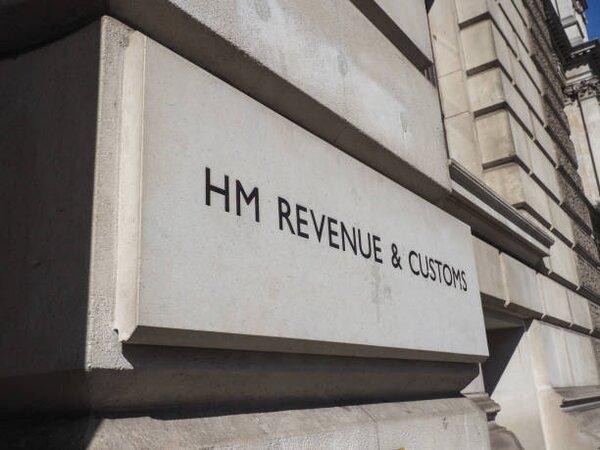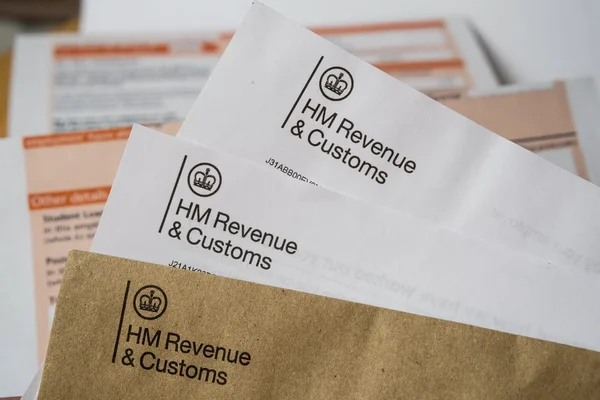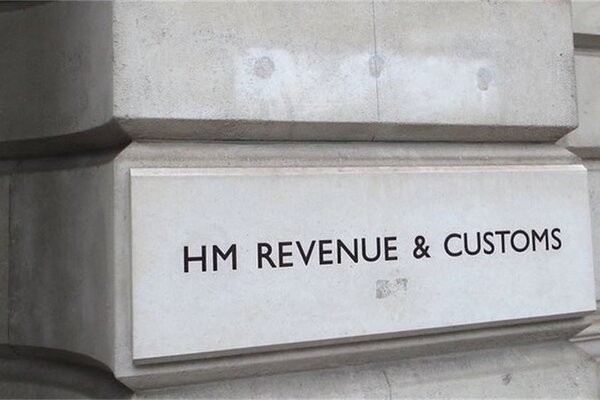Let’s Break This Down Together...
Looking to cut your tax bill before the April deadline?
The Enterprise Investment Scheme (EIS) could be your secret weapon. With 30% income tax relief, capital gains deferral, and even inheritance tax perks, it’s one of the most powerful tools in a savvy investor’s toolkit.
This guide will show you exactly how EIS works, and how to use it before year-end. Let’s dive in.
EIS investments channel funds into entrepreneurial companies, young, innovative, and high-growth businesses, offering investors the chance to back the next wave of industry leaders.
Looking to reduce your tax bill before April? The Enterprise Investment Scheme (EIS) offers one of the most generous tax reliefs available to UK investors. With the tax year-end approaching, now’s the perfect time to consider how EIS investments might transform your tax position.
EIS provides a remarkable 30% income tax relief on investments up to £1 million annually. That means for every £10,000 you invest, you could receive £3,000 back as tax relief. Pretty attractive, right?
But that’s not all. EIS also offers capital gains tax deferral, loss relief, and inheritance tax benefits when properly timed. These combined advantages make EIS a powerful tool in your year-end tax planning arsenal.
What is EIS and Why It's an Income Tax Relief Superstar
The Enterprise Investment Scheme was created to encourage investment in early-stage UK companies. By offering generous tax incentives such as EIS income tax relief, the government hopes to fuel innovation and growth in small businesses and make EIS investments appealing to EIS investors.
When you invest in an EIS company that is an EIS qualifying company, EIS investors receive 30% EIS income tax relief on investments up to £1 million per tax year, provided the company maintains its EIS qualifying status. This means you can potentially reduce your income tax bill by up to £300,000 annually.
The relief applies to the tax year in which the EIS shares are issued. This makes it perfect for year-end planning when you have a clearer picture of your overall tax position.
The tax treatment of EIS investments depends on the EIS qualifying status of the company and the investor meeting all requirements.
Beyond income tax relief, EIS investments held for at least three years are free from Capital Gains Tax when sold. This combination of upfront relief and tax-free growth makes EIS particularly attractive for higher-rate taxpayers.

Using EIS to Defer Capital Gains Tax
Had a profitable year selling assets? EIS can help defer Capital Gains Tax too. If you’ve realised a capital gain, reinvesting that amount into EIS investments allows you to create deferred capital gains. The deferred gain will be taxed in the relevant tax year when you sell your EIS shares.
The timing rules are slightly different here, you can defer gains made up to three years before your EIS investment, or up to one year after. This flexibility is brilliant for tax planning.
Holding EIS shares for at least three years can result in a CGT exemption on any gains, provided all conditions are met.
Year-end is the perfect time to calculate exactly how much capital gains liability you’re facing. With this knowledge, you can make precise EIS investments to defer the right amount of tax. Note that deferred capital gains may become taxable in future tax years, depending on when you dispose of your EIS shares.
Some investors strategically defer gains when they expect to be in a lower tax bracket in future years. This could potentially reduce the overall tax paid when the gain eventually comes back into charge.
Claiming Loss Relief: Step-by-Step
If you need to claim EIS loss relief, it’s important to follow a clear process to ensure you get the maximum tax relief and stay compliant with tax rules. Here’s how it works:
Calculate Your Allowable Loss: Start by working out your effective cost (original investment minus any income tax relief claimed). Subtract the realised value of your EIS shares from this figure to find your allowable loss.
Choose Where to Offset the Loss: You can set your allowable loss against your income tax bill for the current or previous tax year, or against your capital gains tax bill for the current tax year. This flexibility allows you to target the relief where it will have the biggest impact.
Apply Your Marginal Rate: If you’re claiming loss relief against income tax, the relief is calculated at your marginal rate. For example, if your allowable loss is £8,000 and your marginal income tax rate is 45%, you could reduce your income tax bill by £3,600.
Submit Your Claim: Loss relief is usually claimed through your self assessment tax return. Make sure you keep all supporting documents and calculations.
Seek Professional Tax Advice: Claiming loss relief can be complex, especially if you’re offsetting against previous tax years or have a large portfolio. It’s always wise to seek professional tax advice to ensure your claim is accurate and fully compliant.
By following these steps, you can make the most of EIS loss relief and manage your income tax and capital gains tax liabilities more effectively.

Beneficiary Inheritance of EIS Shares
When a beneficiary inherits EIS shares, there may be an opportunity to claim loss relief if the shares have dropped in value since the original investment. The ability to claim loss relief depends on the beneficiary’s own income tax liability and capital gains tax position, as well as the tax rules in force at the time.
It’s important for beneficiaries to understand that the “effective cost” of the shares is based on the original investment amount minus any income tax relief claimed by the deceased investor. This figure, rather than the market value at the time of inheritance, is used to calculate any allowable loss.
If the beneficiary decides to sell the inherited EIS shares at a loss, they may be able to claim loss relief against their own income tax or capital gains tax, depending on their personal circumstances.
Because the rules around inheritance and EIS tax relief can be complex, it’s essential for beneficiaries to seek professional tax advice to ensure they claim loss relief correctly and maximise any available tax relief.
Time Limits for Claiming EIS Relief
Timing is crucial when it comes to claiming EIS relief, including loss relief. Tax rules set strict time limits for making a claim: generally, you must claim loss relief within one year of the 31st January following the end of the tax year in which the loss occurred. For example, if you realise a loss on your EIS shares in the 2022-2023 tax year, you have until 31st January 2025 to submit your claim.
It’s vital to keep detailed records of all your EIS investments, disposals, and any income tax relief claimed, as you’ll need this information to support your claim.
If your EIS shares become worthless, you can make a “negligible value claim” to HMRC, which allows you to crystallise the loss and claim loss relief even if you haven’t sold the shares.
Understanding these time limits and procedures ensures you don’t miss out on valuable tax benefits and helps you manage your overall tax position more effectively. If you’re unsure about the process or your eligibility, always seek professional advice to stay on the right side of the tax rules.
Incorporating EIS into Your Broader Tax Strategy
The smartest tax planners don't view EIS in isolation. Consider combining EIS investments with pension contributions for a double tax relief whammy.
Use ISAs for your more liquid investments, pensions for long-term tax-efficient saving, and EIS for tax relief with the potential for significant growth. This creates a balanced approach to tax-efficient investing.
After holding EIS shares for two years, they become exempt from Inheritance Tax under Business Relief rules. This makes them valuable for estate planning as well as income tax reduction.
Always balance the tax tail and the investment dog, never let tax benefits alone drive investment decisions. Your risk profile and financial goals should remain the primary considerations.

Practical Steps for End-of-Year EIS Implementation
Start by getting a clear picture of your tax position. Use Pie tax or consult with your accountant to understand exactly what you owe before making decisions.
Consider EIS funds rather than direct company investments if you're approaching the year-end. These funds can provide EIS certificates more quickly, ensuring you get relief in the current tax year.
Keep all your EIS documentation organised. You'll need your EIS3 certificates when claiming tax relief on your Self Assessment return.
Set calendar reminders for the three-year holding period. Selling EIS shares too early will trigger a clawback of the income tax relief you received.
Last year, I nearly missed the EIS deadline after procrastinating until late March. The rush to complete due diligence on investments in just days was unnecessarily stressful and limited my options.
Common Pitfalls to Avoid with EIS Tax Planning
Don't invest solely for tax reasons. HMRC can challenge relief if investments are made primarily for tax avoidance rather than commercial purposes.
Beware of liquidity constraints. EIS investments are typically locked up for at least three years, and even after that, finding buyers for shares in private companies can be challenging.
Remember that not all small companies qualify for EIS. The rules are strict, companies must be UK-based, under certain size limits, and conducting qualifying trades.
Watch out for the "risk to capital" condition. HMRC expects genuine risk in EIS investments, not artificially structured schemes designed purely for tax benefits.

Final Thoughts
EIS offers fantastic tax advantages when incorporated into your end-of-year planning. The 30% income tax relief alone makes it worth considering for higher-rate taxpayers.
The additional benefits, CGT deferral, tax-free growth, and inheritance tax exemptioncreate a powerful tax planning tool when used correctly. Few other investments offer such comprehensive tax advantages.
Always balance tax benefits against investment risks. EIS companies are early-stage businesses that might fail, potentially losing your investment despite the tax relief cushion.
With careful timing and professional advice, EIS can transform your tax position while supporting innovative British businesses. This creates a win-win when done right.
Pie: Simplifying EIS in End-of-Year Tax Planning
Navigating EIS tax relief becomes straightforward with the right tools in your corner. Pie shows you instantly how potential EIS investments could reduce your tax bill.
The UK's first personal tax app helps you track all your income sources and existing reliefs. This makes it easy to see exactly how much EIS investment would optimise your tax position.
We'll help you keep perfect records of your EIS investments. No more hunting for paperwork when self-assessment season arrives.
Curious to see how much you could save? Take a look at Pie today and see your potential EIS tax relief calculated in real-time.











